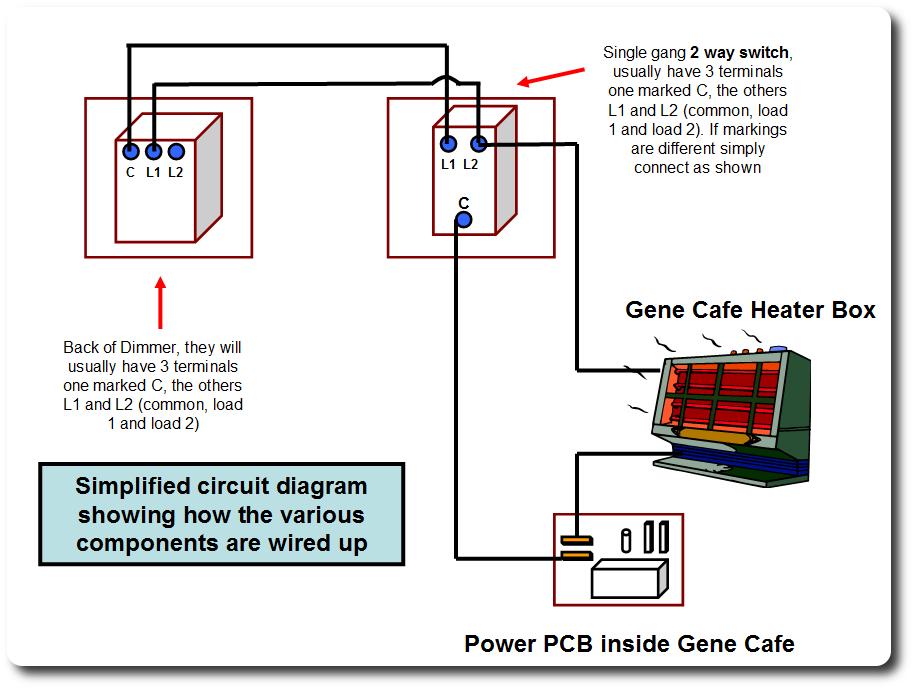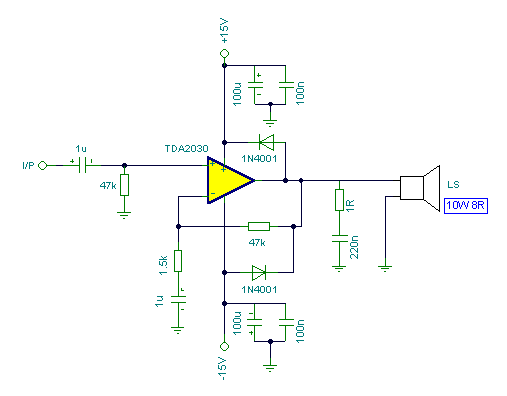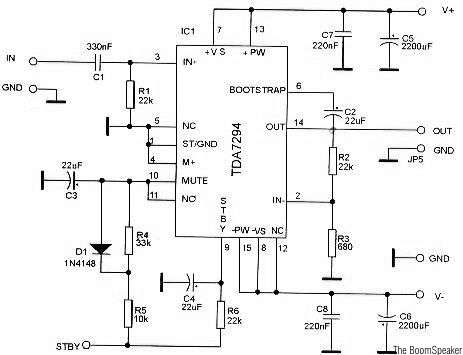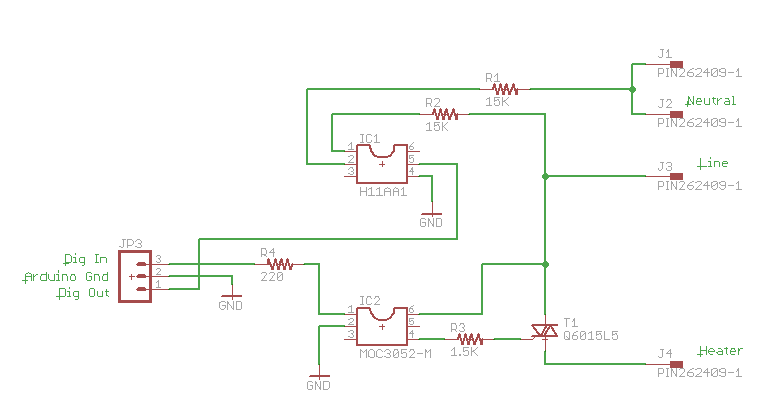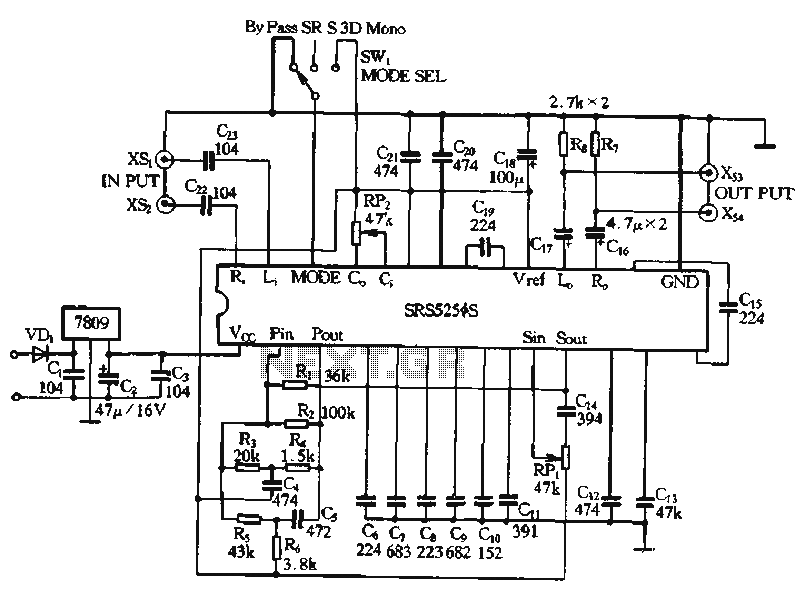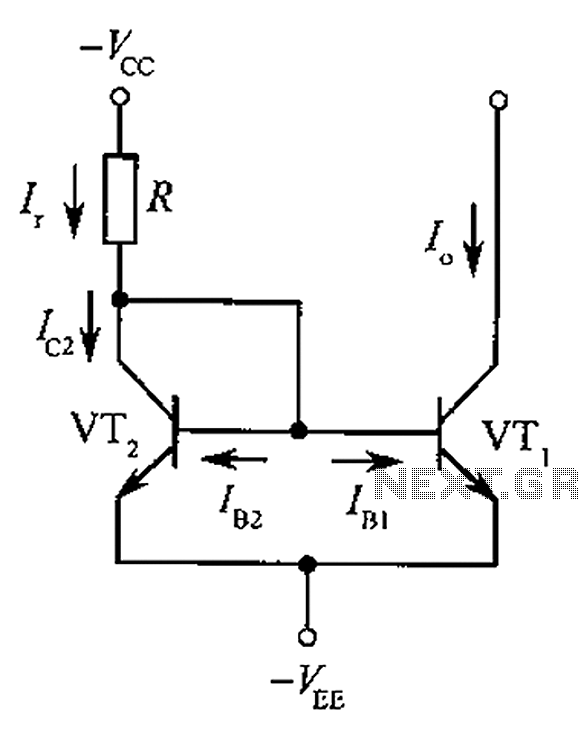
NE 555 & LM 567 Remote Control Circuit
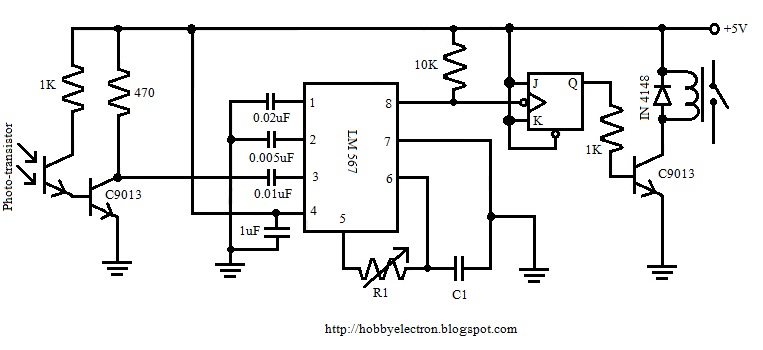
The remote control circuit consists of two main components: the transmitter and the receiver. A simple schematic diagram illustrates the remote control setup. The transmitter circuit utilizes a NE555 timer IC to generate a specific frequency. The receiver circuit operates by detecting the frequency emitted by the transmitter. It is essential that the frequency of the transmitted signal matches the frequency decoder of the receiver circuit. The frequency generated by the NE555 timer aligns with the receiving frequency of the LM567 IC. A variable resistor, R1, is included in the receiver circuit to facilitate tuning. The system functions effectively when properly set up. The first step involves tuning the transmitter, which should be powered continuously while adjusting R1 to detect the transmitter's signal. The second part of the system is governed by the LM567 receiver IC. Each channel in the schematic is designed to operate at a different frequency. Considering the bandwidth of the LM567's frequency detection, the inter-channel frequency difference should be significant enough, with a suggested difference of 5 kHz.
The remote control circuit design is an essential application in wireless communication systems, providing a straightforward means to control devices remotely. The transmitter section, centered around the NE555 timer IC, is configured in astable mode to generate a continuous square wave signal. This signal's frequency can be adjusted by varying the resistor and capacitor values in the timing circuit, allowing for custom frequency generation based on application requirements.
The receiver section employs the LM567 tone decoder IC, which is adept at detecting specific frequencies and outputting a signal when the correct frequency is received. The tuning process is critical; the variable resistor R1 allows for precise adjustments to ensure that the receiver is correctly aligned with the transmitter's output frequency. This tuning process can be facilitated by using an oscilloscope to visualize the frequency output from the transmitter and confirming that the receiver responds appropriately.
In addition to the basic functionality, it is crucial to consider the frequency separation between different channels in multi-channel applications. The recommendation of a 5 kHz difference between channels ensures that the LM567 can effectively distinguish between signals without interference, allowing for reliable operation in environments with multiple remote controls. The design can be expanded by incorporating additional channels, each with unique frequency settings, thereby enhancing the remote control system's versatility and application range.
Overall, the remote control circuit is a practical implementation of analog electronics, showcasing the integration of timing circuits with frequency detection capabilities, which can be adapted for various applications, including consumer electronics, robotics, and automation systems.Remote control circuit consists of two parts, one is transmitter and the other is receiver. A simple diagram is schematic remote control. The transmitter circuit`s transmitter IC is controlled by NE555. Receiver circuit works by the signal emitted frequency which is emitted by that transmitter circuit. Transmitted signal frequency must be equal to the frequency decoder of the receiver circuit. The NE 555 generated frequency is same that receive frequency of IC LM 567. The resistor R1 is a receiver variable to facilitate the process of tuning. The system works well when the circuit is ready. The first step is tuning by way of the transmitter is turned on continuously, while the receiver R1 to set the value to be able to detect the signal transmitter. The second part is the receiver is controlled by LM 567. The following is a schematic drawing recipient. In the picture on top of each channel is designed with a different frequency. By considering the bandwidth of the frequency detection signal LM 567, inter-frequency channels should have a big enough difference, let`s try with a difference of 5 KHz.
🔗 External reference
The remote control circuit design is an essential application in wireless communication systems, providing a straightforward means to control devices remotely. The transmitter section, centered around the NE555 timer IC, is configured in astable mode to generate a continuous square wave signal. This signal's frequency can be adjusted by varying the resistor and capacitor values in the timing circuit, allowing for custom frequency generation based on application requirements.
The receiver section employs the LM567 tone decoder IC, which is adept at detecting specific frequencies and outputting a signal when the correct frequency is received. The tuning process is critical; the variable resistor R1 allows for precise adjustments to ensure that the receiver is correctly aligned with the transmitter's output frequency. This tuning process can be facilitated by using an oscilloscope to visualize the frequency output from the transmitter and confirming that the receiver responds appropriately.
In addition to the basic functionality, it is crucial to consider the frequency separation between different channels in multi-channel applications. The recommendation of a 5 kHz difference between channels ensures that the LM567 can effectively distinguish between signals without interference, allowing for reliable operation in environments with multiple remote controls. The design can be expanded by incorporating additional channels, each with unique frequency settings, thereby enhancing the remote control system's versatility and application range.
Overall, the remote control circuit is a practical implementation of analog electronics, showcasing the integration of timing circuits with frequency detection capabilities, which can be adapted for various applications, including consumer electronics, robotics, and automation systems.Remote control circuit consists of two parts, one is transmitter and the other is receiver. A simple diagram is schematic remote control. The transmitter circuit`s transmitter IC is controlled by NE555. Receiver circuit works by the signal emitted frequency which is emitted by that transmitter circuit. Transmitted signal frequency must be equal to the frequency decoder of the receiver circuit. The NE 555 generated frequency is same that receive frequency of IC LM 567. The resistor R1 is a receiver variable to facilitate the process of tuning. The system works well when the circuit is ready. The first step is tuning by way of the transmitter is turned on continuously, while the receiver R1 to set the value to be able to detect the signal transmitter. The second part is the receiver is controlled by LM 567. The following is a schematic drawing recipient. In the picture on top of each channel is designed with a different frequency. By considering the bandwidth of the frequency detection signal LM 567, inter-frequency channels should have a big enough difference, let`s try with a difference of 5 KHz.
🔗 External reference
